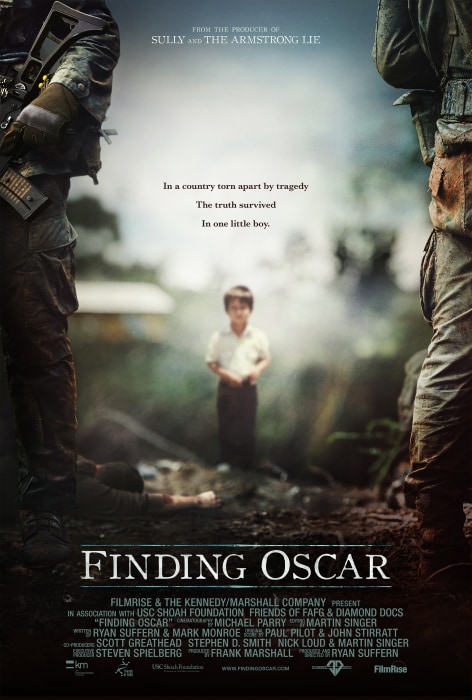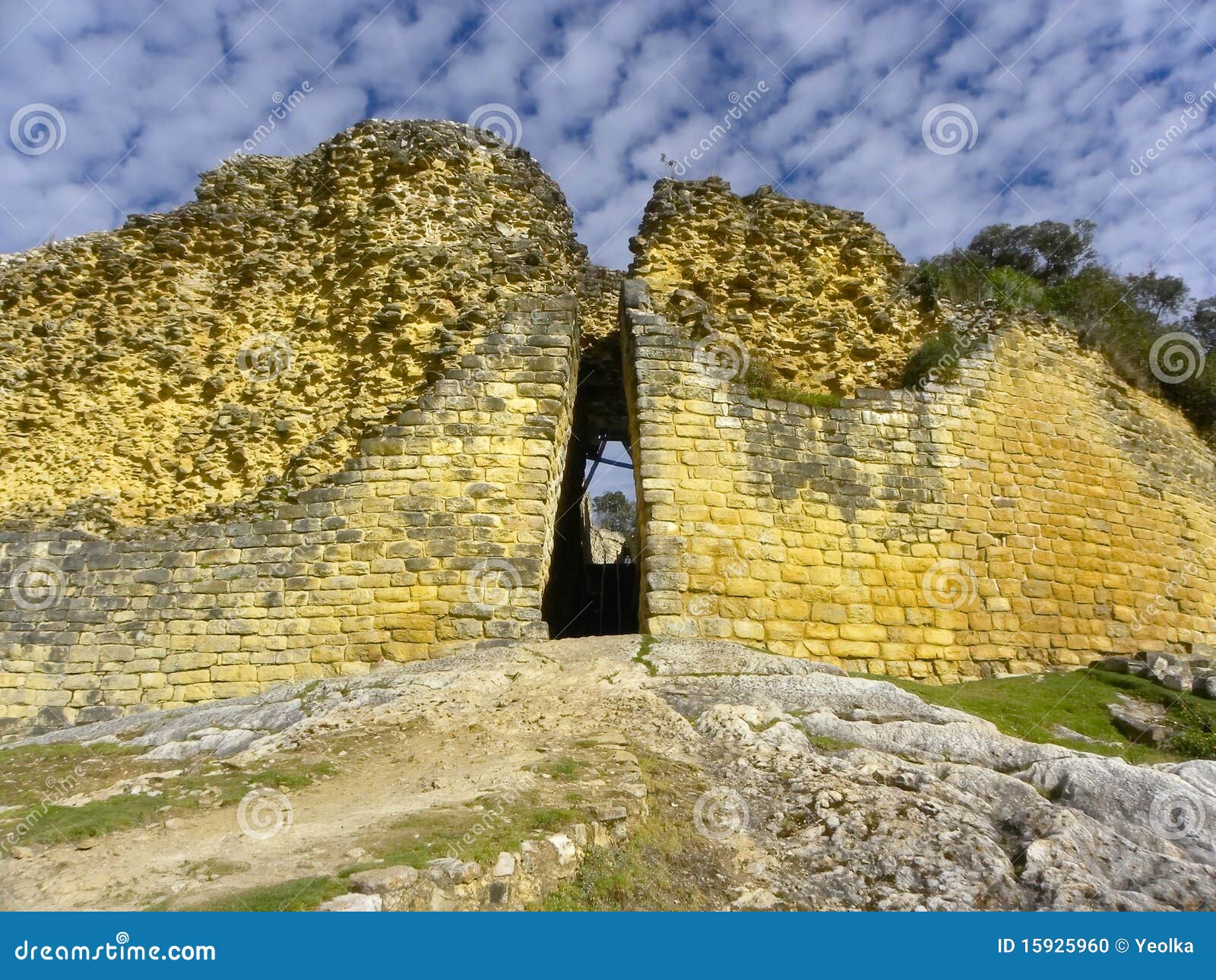Judi Lynn
Judi Lynn's JournalFinding Oscar: Horror and Hope, After Unimaginable Massacre in Guatemala
APR 14 2017, 5:57 AM ET
‘Finding Oscar’: Horror and Hope, After Unimaginable Massacre in Guatemala
by RAUL A. REYES
The unimaginable horrors of the Guatemalan civil war can be seen through what took place in one village. But it took decades to piece together a massacre perpetrated by the country's military that defies the imagination.
The search for answers form the heart of a new documentary, "Finding Oscar," now opening nationwide. Executive produced by Steven Spielberg, the film examines Guatemala's history - including U.S. support for the government at the time - and the war that that led to the horror of that one night, as well as the search for the children who would serve as living proof that the event occurred.
- video -
Until one fateful night, Dos Erres was a typical village in Guatemala. It was largely removed from the civil war that had gripped the country for decades. Most of its inhabitants were farmers. It was home to about 40 families, including 70 to 80 children. It contained one school, two churches, and a community well located in the center of town. Although Dos Erres - the name means "Two Rs" - was situated in a remote section of the country, one resident recalls, "La vida era buena" - life was good.
That all changed on December 6, 1982. Acting on the false belief that some villagers were sheltering weapons for local guerilla fighters, government-backed commandos stormed the town and rounded up all of the inhabitants. After a night of brutality, rapes and interrogations, the decision was made to "disappear" the entire village.
. . .

More:
http://www.nbcnews.com/news/latino/finding-oscar-horror-hope-after-unimaginable-massacre-guatemala-n746201
Ultrasound Scan in Intensive Medicine, a New Cuban Experience
Ultrasound Scan in Intensive Medicine, a New Cuban Experience

Havana, April 14 (Prensa Latina) The Cuban experience in the application of ultrasound scan in intensive medicine is considered as one of most interesting issues debated at the International Congress URGRAV-2017, held in Havana.
In Cuba, the intensivists do not have this competition to date, hence the great importance of tackling down this issue in this event, Hector Diaz, Dr. told Prensa Latina, who launched a book project on the use of ultrasound scan in critical care medicine.
He explained that this kind of tool has always been an important instrument belonging to radiologists; and even though it is frequently used in Cardiology or Gynecobstetrics, there is no precedent of being previously used in the intensive medicine in Cuba. Several colleagues and I have been working hard for some years on clinical ultrasound scan applied to our specialty. It is a skill that we want to implement.
Hector pointed out that his presentation at the 7th International Congress of Emergencies and Intensive Care, URGRAV-2017, was based on the current impact that this initiative has had on the Cuban intensive medicine.
http://www.plenglish.com/index.php?o=rn&id=11723&SEO=ultrasound-scan-in-intensive-medicine-a-new-cuban-experience
(Short article, no more at link.)
Watch: Cubas Reggaeton Revolucin Prospers In The Face Of Censorship
Watch: Cuba’s ‘Reggaeton Revolución’ Prospers In The Face Of Censorship
Viva Shanice Davis @alwayshanice | April 14, 2017 - 2:31 pm

CREDIT: Vimeo
Though eminent among Cuban youth, reggaeton was forced underground after the government censored the “explicit” genre on television and radio back in 2012. That hasn’t stopped creative forces behind the sound from pushing it forward, however, as seen in Reggaeton Revolución: Cuba in the Digital Era. “People said that reggaeton wouldn’t last, but it’s here to stay,” reggaetonero Jacob Forever proclaims in the mini documentary.
Banned from state-run recording studios, artists step no further than their homes or other makeshift spaces to produce some of the nation’s biggest hits. “There’s no record label here that sign[s] hip-hop artists nor electronic music nor reggaeton,” music producer DJ Unic explains. “The urban scene isn’t important to them when it should be because so many people love it.”
Thanks to a nationwide file sharing system called “El Paquete,” new releases travel across Cuba week after week nevertheless. “In other countries you protect your music, but here we don’t,” Forever notes. “We give it out so everyone can hear it.”
Amid restored diplomatic relations with the U.S., Cuban reggaeton is predicted to gain more momentum despite the government’s wishes. “Cuba is a school. The greatest school in the world,” reggaetonera Patry White expresses with pride. “We don’t have all the resources, but we can do a lot with very little. Good things are coming.”
Video at link:
http://www.vibe.com/2017/04/cuba-reggaeton-censorship/
U.N. rights expert praises Cuba social welfare system; hopes for more dialogue
Fri Apr 14, 2017 | 5:13pm EDT
By Sarah Marsh and Nelson Acosta | HAVANA
A United Nations expert said on Friday she hoped her visit to Cuba would open the door to a more intense dialogue on human rights and praised the country's social welfare system for reducing Cubans' vulnerability to human trafficking.
. . .
Cuba's free healthcare, education and social security systems help reduce vulnerabilities that can lead to trafficking, Giammarinaro told a news conference.
"Vulnerability factors are probably less significant than other countries' - for example, social inequalities and situations of complete destitution," she said.
She did note, however, concerns over Cubans emigrating, for example, in hopes of taking greater advantage of their skills abroad and then "finding themselves in a situation of destitution."
More:
http://www.reuters.com/article/us-cuba-rights-idUSKBN17G1JK?feedType=RSS&feedName=worldNews&utm_source=feedburner&utm_medium=feed&utm_campaign=Feed%3A+Reuters%2FworldNews+%28Reuters+World+News%29&&rpc=401
Echoes of an infamous Easter: the carapintada mutiny
Thursday, April 13, 2017
Thirty years ago, as Easter Week arrived, Argentina’s fledgling democracy faced its first military challenge. For once, people took to the streets to support a government yet the four-day crisis left many fearful. The consequence of the carapintada uprising was the Due Obedience Law, a bill that would reshape the country’s human rights landscape forever and allow torturers and abusers to get off scot-free. This is the story of what happened on a fateful — and unforgettable — Semana Santa.
“If a general shows confidence in his men but always insists on his orders being obeyed, the gain will be mutual.” — Sun-Tzu, The Art of War
On the night of Wednesday, April 15, 1987, president Raúl Alfonsín was in his hometown of Chascomús, unwinding at the beginning of Easter Week (or Semana Santa as it’s known locally). A phone-call put an end to his rest.
“This is more serious than we thought,” Horacio Jaunarena, the minister of Defence, told him ominously.
More:
http://buenosairesherald.com/article/225288/echoes-of-an-infamous-easter-the-carapintada-mutiny
Brazilian artist paints 'biggest' ever mural
Brazilian artist paints 'biggest' ever mural
14 APR 2017

Many painters struggle to get their work viewed but Brazilian street artist Eduardo Kobra won't have a problem -- his most recent work is billed as the biggest in the world.
The prolific Kobra takes as his canvas the sides of the Cacau Show factory on one of the main highways into Sao Paulo, and not just one side but wrapping around the corners.
Still not quite finished, it shows the top half of an indigenous tribesman in a multicolored collage as he paddles through a great brown river of chocolate. The work connects the chocolate products inside the building to the traditions of far-off Amazonian cocoa farmers.
Kobra already held the Guinness World Record for biggest spray paint mural in Rio de Janeiro and he says this one, at 61,354 square feet (5,700 square meters) is even bigger.
. . .

More:
https://www.afp.com/en/news/23/brazilian-artist-paints-biggest-ever-mural
[center]
Another Eduardo Kobra!


Commissioned for the Rio Olympics
ETC., ETC., ETC.
Grab your signs: There are 3 big anti-Trump marches coming up this month
THURSDAY, APR 13, 2017 11:15 PM CDT
Grab your signs: There are 3 big anti-Trump marches coming up this month
The administration's April cowards bring protesters empowered
ILANA NOVICK, ALTERNET
Don’t put away that protest sign or cut down on the calls to Congress just yet. The Trump administration has more fuel for the resistance fire, shocking Americans back into action just in time for three anti-Trump marches scheduled this month.
After a brief fling with mere half-truths (as opposed to whole-cloth lies), White House press secretary Sean Spicer returned to the podium Monday to play down Adolf Hitler’s use of chemical weapons and introduce Americans to the concept of “Holocaust centers,” the one-stop genocide shopping they didn’t teach you about in history class.
It was a shocking performance, especially during Passover and on the heels of another shooting at an elementary school in San Bernardino.
People are also angry about an earlier immigration speech in Texas from Attorney General Jeff Sessions, whose prepared remarks referred to undocumented immigrants as “filth.” Fortunately, the AG omitted that line when he delivered the speech.
More:
http://www.salon.com/2017/04/14/grab-your-signs-there-are-3-big-anti-trump-marches-come-up-this-month_partner/
Distant Object 'DeeDee' Makes the Dwarf Planet Grade
By Mike Wall, Space.com Senior Writer | April 12, 2017 02:20pm ET
The solar system's dwarf-planet population is about to increase by one.
The far-flung object 2014 UZ224 — informally known as DeeDee, for "Distant Dwarf" — is about 395 miles wide (635 kilometers), new observations reveal. That means the frigid object probably harbors enough mass to be shaped into a sphere by its own gravity, entitling it to "dwarf planet" status, researchers said.
Astronomers first spotted DeeDee in 2014 using the optical Blanco telescope at the Cerro Tololo Inter-American Observatory in Chile (though they didn't announce the discovery until 2016). [Meet the Solar System's Dwarf Planets]
More:
http://www.space.com/36445-deedee-distant-dwarf-planet-alma-telescope.html?utm_source=notification
[center] 



Cerro Tololo Inter-American Observatory, Atacama Desert, Chile
Listen to the ancient sounds of Stonehenge: app transports you back to 3,000BC
Listen to the ancient sounds of Stonehenge: app transports you back to 3,000BC
Digital acoustic models were used to reimagine what it would be like to walk around Stonehenge and listen to the sounds of music and wildlife in 3,000BC
By LIAT CLARK
Wednesday 12 April 2017
- click for image -
https://wi-images.condecdn.net/image/AjL4lp6Nzqk/crop/810
The secrets of Stonehenge may have just been uncovered – by a music technologist.
Rupert Till from the University of Huddersfield has released an app that recreates the soundscape of the ancient temple as it would have originally been heard thousands of years ago, complete with the sounds of the Wilsford bone flute unearthed in a pit near the site, and the songs of owls, nightingales and corncrakes common to the region in Wiltshire. Till is one of a growing group of researchers which believes one of the core reasons for Stonehenge’s existence was its acoustic properties.
The ancient site, erected almost 5,000 years ago in the late Neolithic period, has remained a compelling mystery. In the 1920s, it was discovered that some of the nine-metre-tall, 25-tonne bluestones that make up the site were hauled almost 200 miles from the Preseli Hills in western Wales. The seemingly impossible logistics of how this occurred has confounded archaeologists, but a group of "archaeoacoustics" have instead been investigating the reason why the stones were moved this great distance.
In 2014, the Landscape and Perception Project at London's Royal College of Art tested thousands of stones at the Carn Menyn ridge in Wales and discovered that bluestones have incredible sonic properties, and can “ring” like a bell when hit. “You can almost see them as a pre-historic glockenspiel, if you like, and you could knock them and hear these tunes.” professor Tim Darvill, an expert on Stonehenge, told the BBC at the time. "And soundscapes of pre-history are something we're really just beginning to explore."
Researchers from the Universities of Salford, Huddersfield and Bristol, have been looking into this phenomena for close to a decade, digitally recreating soundfields using mathematical acoustic analysis gathered from lidar data of Stonehenge. In 2011, the fruits of this labour were unveiled at the Museum of Science and Industry in Manchester, where visitors could walk through an immersive replica of the monoliths and listen to the ancient sounds of music, people and wildlife.
More:
http://www.wired.co.uk/article/stonehenge-acoustic-app-listen-to-history
Travel review: The ancient cloud forest citadel of Kuelap
Travel review: The ancient cloud forest citadel of Kuelap
- click for image -
http://res.cloudinary.com/jpress/image/fetch/w_700,f_auto,ar_3:2,c_fill/http://www.yorkshirepost.co.uk/webimage/1.8482121.1491578357!/image/image.jpg
Entering the Kuelap archaeological complex in Amazonas, Peru. PIC: PA
10:00Sunday 09 April 2017
Peru’s ancient civilisations had a habit of building sky-high, altitude-busting citadels. Machu Picchu is the most famous of all, but further north in the cloud forests of Amazonas is a place far grander in age and scale. Yet few travellers even know it’s there.
Built in AD 500 by the Chachapoyas people, the fortress town of Kuelap predates Peru’s Inca big hitter by 900 years.
Sixteenth century chronicles written by Spanish conquistadors speak of Amazonas – a region of tumbling rivers, steep gorges and mountains quilted with frog green forests – as being one of the hardest regions to reach.
It remained that way up until recently when the opening of an airport at Jaen, in the neighbouring Cajamarca region, greatly eased access.
Read more at: http://www.yorkshirepost.co.uk/lifestyle/travel/travel-review-the-ancient-cloud-forest-citadel-of-kuelap-1-8482122
[center] 




 [/center]
[/center]
More images:
https://www.searchlock.com/search?q=Kuelap++amazonas+peru&slr=1&tbm=isch&sr=pageredir-google
Profile Information
Member since: 2002Number of posts: 160,527